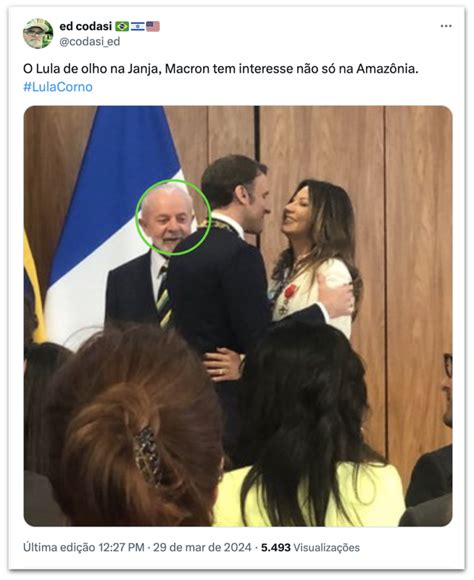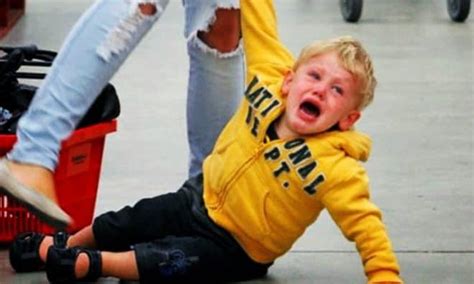
A video appearing to show French President Emmanuel Macron’s wife, Brigitte Macron, pushing a man’s face during a public appearance has gone viral, sparking heated debate online about gender dynamics, personal space, and appropriate behavior in the context of political figures and their families.
A brief video clip circulating on social media platforms allegedly depicts the French First Lady interacting with a crowd when she appears to push away a man attempting to greet or approach her husband. The incident, which occurred during a public walkabout, has fueled discussions regarding whether her actions were justified, an overreaction, or even a misrepresentation of what actually transpired.
The video, which has amassed millions of views across various platforms, shows President Macron and his wife greeting well-wishers. As they moved through the crowd, a man seemingly reached out toward the presidential couple. The video then appears to show Brigitte Macron intervening, with her hand seemingly making contact with the man’s face.
The ambiguity of the footage has contributed significantly to the ongoing debate. Some social media users argue that Brigitte Macron was protecting her husband from a potential threat or an overly enthusiastic admirer encroaching on their personal space. Others claim that her reaction was disproportionate and potentially disrespectful, regardless of the man’s intentions. Many emphasize that it’s impossible to determine the exact context and intent based solely on the short video clip.
The incident has also rekindled broader discussions about the scrutiny and pressure faced by political figures and their families. The intense public interest in their personal lives and interactions often leads to heightened security concerns and a need to navigate public appearances with extreme caution. Some commentators suggest Brigitte Macron’s action might stem from concerns over the increased incidents of harassment and physical aggression toward public figures witnessed globally.
Furthermore, the debate has expanded to include discussions about gender roles and expectations. Some online users highlight the disparity in how a similar action would be perceived if performed by a man. The potential for accusations of aggression and abuse is significantly higher for men in similar situations, contributing to the complexity of the discourse surrounding the video.
The French government has yet to release an official statement regarding the incident. However, the widespread attention the video has garnered underscores the challenges faced by public figures in the age of social media and the constant surveillance that accompanies modern political life.
Brigitte Macron has previously been noted for her proactive approach to her role as First Lady, often engaging directly with the public and advocating for various social causes. This incident provides a new dimension to her public persona, adding to the ongoing conversation about the evolving role of First Ladies in the 21st century.
The lack of clarity surrounding the video and the absence of official statements have only intensified the speculation and debate. As the video continues to circulate, the incident serves as a microcosm of the broader challenges of interpreting events in the digital age, where context and intent are often difficult to ascertain and where opinions are readily amplified and shared.
The controversy surrounding the incident reflects not only the intense scrutiny of political figures but also the broader societal discussions about personal space, security, gender dynamics, and the impact of viral media on public perception. Whether Brigitte Macron’s action was justified, an overreaction, or something in between remains a subject of vigorous debate, highlighting the complexities of navigating public life in the contemporary media landscape.
Contextual Background
Brigitte Macron’s role as the First Lady of France has often been characterized by her active involvement in social and cultural affairs. She has championed education, disability rights, and various health initiatives. Her involvement in these areas has led to a certain level of public recognition and popularity, but also increased scrutiny.
It is important to remember that public figures, especially those in positions of power, are frequently subject to constant observation and security concerns. The French presidential security detail is responsible for ensuring the safety of the President and his family at all times. The context of public appearances, especially those involving large crowds, can be particularly challenging from a security perspective.
Moreover, in recent years, there have been several instances of political figures facing unexpected and even violent interactions during public engagements. These incidents have led to a heightened awareness and sensitivity among security personnel and the figures themselves. For example, President Macron himself was slapped in the face during a walkabout in 2021, which led to increased security measures around his public appearances.
The Viral Video: A Closer Look
The video in question is a short clip, often just a few seconds long, that has been extracted from a larger recording of President and Mrs. Macron interacting with the public. This brevity is crucial because it provides limited context for understanding the entire interaction.
The video typically shows the Macrons greeting individuals. Then, a man appears to extend his hand or move towards them. At this point, Brigitte Macron seems to interject, and her hand makes contact with the man’s face or upper body. The exact nature of the contact is ambiguous, and the video’s quality is often insufficient to definitively determine whether it was a push, a block, or another type of gesture.
The reactions captured in the video are diverse. Some people in the immediate vicinity appear unconcerned, while others seem surprised. However, without additional information or perspectives from those present, it is difficult to accurately gauge the overall atmosphere and reactions.
Diverse Interpretations and Gender Dynamics
The differing interpretations of the video have spurred a wide-ranging debate, touching on issues of gender, power, and perception. Some argue that Brigitte Macron was simply protecting her husband, emphasizing the potential security risks that political figures face. They suggest that any action taken to ensure the safety of the President is justifiable, regardless of how it might appear out of context.
Others argue that Brigitte Macron’s action was an overreaction, particularly if the man posed no real threat. They criticize the alleged use of physical contact as an inappropriate response, particularly given her position as the First Lady. They propose that de-escalation tactics or a more subtle intervention by security personnel might have been more appropriate.
The debate has also raised questions about gender dynamics. Some online commentators have noted that if President Macron had similarly touched a woman’s face, the reaction would likely have been overwhelmingly negative, potentially leading to accusations of assault or harassment. This disparity in perception underscores the complexities of gender roles and expectations in contemporary society.
This perspective highlights the double standards that often exist, where men are held to different accountability standards regarding physical contact than women. Such discussions reveal entrenched biases and the ongoing need for a more equitable understanding of appropriate behavior across gender lines.
The Impact of Social Media
The rapid dissemination of the video through social media platforms has played a crucial role in shaping public perception. The video’s virality means it has been viewed, shared, and commented upon by millions of people, many of whom lack detailed knowledge of the context or the individuals involved.
Social media algorithms often prioritize content that is emotionally charged or controversial, which can amplify the impact of incidents like this. The lack of editorial oversight on many social media platforms can also lead to the spread of misinformation or biased interpretations.
The echo chamber effect, where individuals are primarily exposed to opinions that align with their own, can further exacerbate the polarization of views. People who already hold certain beliefs about political figures or gender roles are more likely to interpret the video in a way that confirms those beliefs.
Official Response and Future Implications
As of this writing, there has been no official statement from the French government or the Élysée Palace regarding the incident. This silence has fueled further speculation and debate, as observers await an explanation or clarification of the events depicted in the video.
The incident may prompt a review of security protocols for public appearances by the President and First Lady. It could also lead to greater scrutiny of Brigitte Macron’s public interactions and a more cautious approach to engaging with crowds.
The long-term impact of the incident remains to be seen. However, it underscores the challenges faced by public figures in the age of social media and the constant need to balance security concerns with the desire to connect with the public.
The incident also serves as a reminder of the importance of critical thinking and media literacy. In a world saturated with information, it is essential to carefully evaluate sources, consider multiple perspectives, and avoid jumping to conclusions based on limited or ambiguous evidence.
The Macron face-shove video is not simply an isolated incident but a reflection of broader societal trends and challenges. It highlights the complexities of public life, the power of social media, and the ongoing need for a nuanced understanding of gender dynamics and security concerns in the contemporary world.
The Role of Security Detail
A key, often understated, aspect of incidents like this is the role and responsibility of the security detail. These professionals are tasked with ensuring the safety and well-being of the President and First Lady at all times. Their training prepares them to identify potential threats and take swift action to neutralize them.
The security detail’s perspective is often different from that of the public. They are focused on assessing risks and making split-second decisions based on limited information. Their primary goal is to prevent harm, even if it means taking actions that may appear overly cautious or aggressive to outside observers.
It is possible that Brigitte Macron’s actions were influenced by the presence and behavior of her security detail. She may have been acting in coordination with them, or her actions may have been a response to a perceived threat that they had already identified. Without direct insight into the security team’s assessment of the situation, it is difficult to fully understand the context of her actions.
Historical Context of First Ladies and Public Perception
First Ladies throughout history have faced varying degrees of public scrutiny and expectations. Their roles have evolved significantly over time, from primarily ceremonial duties to active involvement in policy advocacy and social causes. Each First Lady has had to navigate the challenges of balancing personal privacy with public expectations.
In France, the role of the First Lady is not formally defined by law, which gives Brigitte Macron considerable flexibility in shaping her own approach. She has chosen to be actively involved in various initiatives, which has made her a prominent figure in French public life. This increased visibility also means increased scrutiny and a greater likelihood of being involved in controversial incidents.
The public’s perception of First Ladies is often shaped by a complex mix of factors, including their personal style, their political views, and their relationship with the President. Incidents like the “face-shove” video can significantly impact public perception, particularly if they reinforce existing stereotypes or biases.
Ethical Considerations
The incident raises important ethical considerations for journalists and social media users alike. The spread of the video and the accompanying commentary highlight the potential for misinformation and the need for responsible reporting.
Journalists have a duty to provide accurate and contextualized information, even when dealing with sensitive or controversial topics. This includes verifying the authenticity of videos, seeking multiple perspectives, and avoiding sensationalism.
Social media users also have a responsibility to share information responsibly and to avoid contributing to the spread of misinformation or hate speech. This includes being skeptical of content that is emotionally charged or lacks reliable sourcing.
The Psychological Impact
The intense scrutiny and pressure faced by public figures can have a significant psychological impact. Constant surveillance, public criticism, and security threats can lead to stress, anxiety, and even depression.
Brigitte Macron, like other First Ladies, must navigate these challenges while also maintaining a public persona and supporting her husband’s political agenda. The incident highlights the emotional toll that public life can take and the importance of providing support and understanding to those in positions of power.
The potential for misinterpretation and the speed at which controversies can spread through social media add to the psychological burden. Public figures must be constantly aware of how their actions might be perceived and prepared to respond to criticism and scrutiny.
FAQ Section:
Q1: What exactly happened in the video of Brigitte Macron that is circulating online?
A1: The video shows French President Emmanuel Macron and his wife, Brigitte Macron, greeting members of the public. As they move through the crowd, a man reaches out towards them. Brigitte Macron appears to intervene, with her hand seemingly making contact with the man’s face or upper body. The exact nature of the contact (whether it was a push, a block, or another gesture) is ambiguous and the video’s brevity limits context.
Q2: Why has the video caused so much debate and controversy?
A2: The video has sparked debate due to differing interpretations of Brigitte Macron’s actions. Some believe she was protecting her husband from a potential threat, while others argue her reaction was an overreaction or inappropriate. The ambiguity of the video, coupled with discussions about gender roles and the scrutiny faced by political figures, has fueled the controversy.
Q3: Has the French government or the Élysée Palace issued a statement about the incident?
A3: As of this writing, there has been no official statement from the French government or the Élysée Palace regarding the incident. This silence has contributed to the ongoing speculation and debate surrounding the video.
Q4: How has social media influenced the public’s perception of the incident?
A4: The rapid dissemination of the video through social media has played a crucial role in shaping public perception. The video’s virality has meant it has been viewed by millions, often without proper context. Social media algorithms and echo chambers can amplify emotional reactions and biased interpretations, further polarizing views.
Q5: What are the broader implications of this incident for public figures and security protocols?
A5: The incident highlights the challenges faced by public figures in the age of social media, where actions are constantly scrutinized. It may prompt a review of security protocols for public appearances by the President and First Lady, leading to greater caution in engaging with crowds. It also underscores the importance of critical thinking and media literacy in evaluating information in the digital age.
Analysis of the Incident Within the Broader Political Landscape
To understand the full context of the “Macron face-shove video” incident, it is crucial to situate it within the broader political landscape in France and the ongoing trends in global politics. Public figures, especially those in positions of power, are constantly under scrutiny, and their actions are often interpreted through the lens of existing political tensions and social anxieties.
In France, President Macron’s leadership has been marked by both strong support and significant opposition. His policies, particularly those related to economic reform and social welfare, have faced resistance from various segments of the population. This existing political polarization can amplify reactions to any incident involving him or his family.
The rise of populism and anti-establishment sentiment in many Western democracies has also contributed to a more volatile and unpredictable political environment. Public figures are increasingly targeted by online harassment, threats, and even physical violence. This heightened sense of risk can influence their behavior and the security measures taken to protect them.
Brigitte Macron’s role as First Lady is also subject to these political dynamics. While she enjoys a degree of popularity and has been praised for her active involvement in social causes, she is also seen by some as a symbol of the political elite. This perception can shape how her actions are interpreted, particularly by those who are critical of President Macron’s policies.
The incident can also be seen as a reflection of the changing media landscape. The rise of social media and citizen journalism has democratized the flow of information, but it has also made it more difficult to control the narrative. Public figures are now constantly at risk of having their words and actions recorded and shared online, often without context or verification.
In this environment, it is essential for public figures to be extremely careful about their behavior in public and to be prepared to respond quickly and effectively to any controversy that arises. The lack of an official statement from the French government regarding the “face-shove” video may have exacerbated the situation, allowing speculation and misinformation to spread unchecked.
The incident also underscores the importance of media literacy for the public. It is crucial to be critical of information that is shared online and to seek out multiple perspectives before forming an opinion. Jumping to conclusions based on a short video clip can lead to misinterpretations and unfair judgments.
Ultimately, the “Macron face-shove video” incident is a complex and multifaceted event that reflects the challenges of public life in the digital age. It highlights the importance of security, the power of social media, and the need for responsible reporting and critical thinking.
Comparative Analysis with Other Similar Incidents
Analyzing the “Macron face-shove video” in comparison to other similar incidents involving public figures can provide valuable insights into the broader context and potential implications. There have been numerous instances of politicians and their families being involved in controversial interactions with the public, and examining these cases can help to identify common themes and patterns.
For example, in 2021, President Macron himself was slapped in the face by a member of the public during a walkabout. This incident led to widespread condemnation and increased security measures around his public appearances. It also highlighted the potential for political violence and the need for vigilance.
In other countries, similar incidents have involved accusations of assault, harassment, or inappropriate behavior. These cases often spark intense media scrutiny and public debate, and they can have a significant impact on the careers and reputations of the individuals involved.
Comparing the “Macron face-shove video” to these other incidents reveals several key similarities. In all cases, the events were captured on video and quickly spread through social media, generating a wave of commentary and debate. In all cases, there were differing interpretations of the events, with some people defending the actions of the public figures and others condemning them.
However, there are also some important differences. In the “Macron face-shove video,” the nature of the contact is ambiguous, and there is no clear evidence that Brigitte Macron intended to harm or disrespect the man. In other cases, the actions were more clearly aggressive or inappropriate.
The response from the authorities also varies from case to case. In some instances, investigations are launched and charges are filed. In others, the incidents are dismissed as minor misunderstandings.
By comparing the “Macron face-shove video” to other similar incidents, it is possible to gain a more nuanced understanding of the complexities of public life and the challenges faced by political figures and their families. It also underscores the importance of considering context and avoiding hasty judgments.
The Legal Dimensions (Speculative)
While there are no official reports or indications of legal proceedings stemming from the “Macron face-shove video” incident, it’s useful to explore the potential legal dimensions hypothetically, as this can further illuminate the boundaries of acceptable conduct in public interactions.
If the man in the video were to pursue legal action against Brigitte Macron, potential claims could revolve around:
- Battery: This would require demonstrating that the contact was intentional, harmful, or offensive. Given the ambiguity of the video and the lack of apparent injury, proving battery would be challenging. The defense would likely argue that the contact was unintentional or justified as self-defense or defense of another (her husband).
- Assault: This would involve proving that the man had a reasonable apprehension of imminent harmful or offensive contact. Again, the ambiguity of the video would make this difficult to establish.
However, it is also important to consider potential defenses:
- Self-Defense/Defense of Others: If Brigitte Macron reasonably believed her husband was in danger, she could argue that her actions were justified to protect him.
- Lack of Intent: The defense could argue that the contact was accidental or inadvertent.
- Privilege: Given her role as First Lady and the security concerns surrounding the President, there might be arguments made for a limited privilege to act in certain situations to protect the President’s safety.
It is crucial to reiterate that these are speculative legal scenarios. The absence of any reported legal action suggests that neither party intends to pursue the matter in court. However, exploring these legal dimensions helps illustrate the complexities of determining liability and intent in situations involving physical contact, especially when public figures are involved.
The Future of Public Engagements: A Paradigm Shift?
The “Macron face-shove video” incident, along with similar occurrences worldwide, may signal a potential paradigm shift in how public figures engage with the public. The increasing risks, amplified by social media’s reach and the current politically charged atmosphere, might lead to more controlled and less spontaneous interactions.
We might see:
- Enhanced Security Measures: Even stricter security protocols at public events, creating more distance between politicians and the public. This could involve more barriers, increased security personnel, and more thorough screening processes.
- Reduced Spontaneity: A move away from unplanned walkabouts and impromptu interactions, favoring more structured and controlled engagements with pre-selected participants.
- Virtual Engagements: A greater reliance on virtual events, town halls, and online platforms to communicate with the public, minimizing physical contact and potential security risks.
- Media Training and Public Relations Emphasis: More intensive training for politicians and their families on how to interact with the public in a way that minimizes the risk of misinterpretation or controversy. Public relations strategies will become even more crucial in managing public perception and mitigating potential damage from viral incidents.
While these changes might enhance security and control, they could also create a sense of distance and detachment between political leaders and the people they represent. Finding a balance between security and accessibility will be a key challenge for public figures in the years to come. The future of public engagements may involve a more cautious and calculated approach, prioritizing safety and image management over spontaneous interactions.









